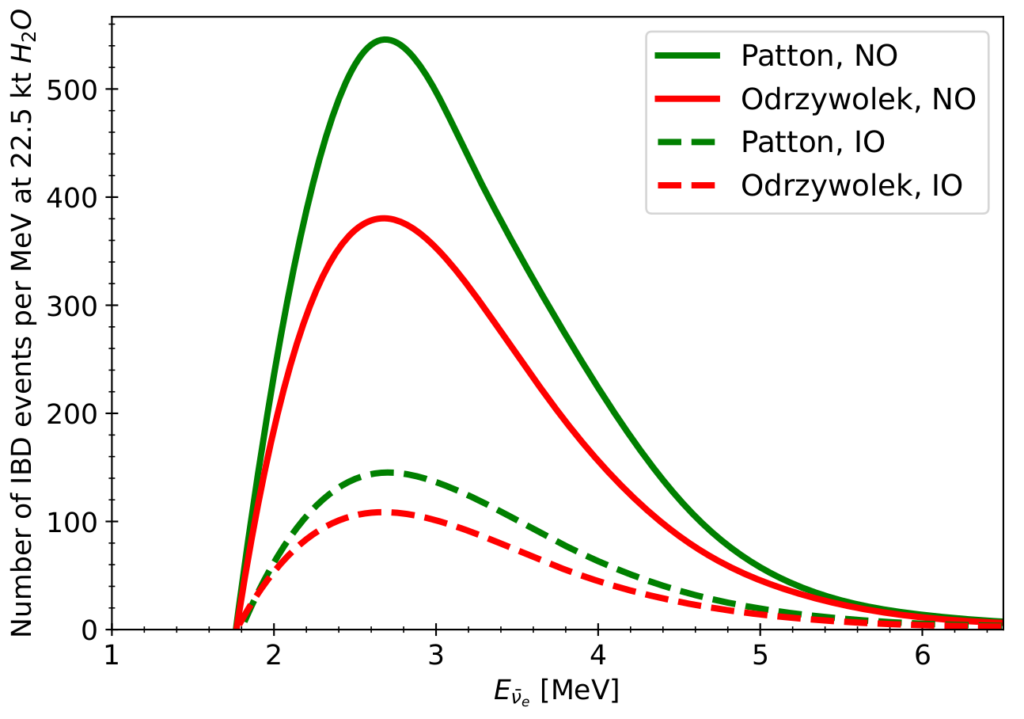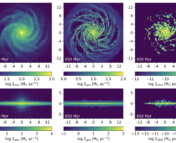Title: Pre-Supernova Alert System for Super-Kamiokande
Authors: the Super-Kamiokande Collaboration
First Author’s Institution: Institutions affiliated with the Super-Kamiokande Collaboration
Status: full text available on the arXiv.
Let me start with a fun fact you might have heard before; there are literally trillions of neutrinos flying through you every second while you are reading this. You also might have noticed that you don’t feel these neutrinos at all (see also this article). It gets really weird when knowing that most of them casually fly through Earth without barely noticing the thousands of kilometers of planet they are passing through and even weirder when considering they were only first detected in the 50s.
This immediately shows the problem with these particles: they really don’t like to talk to us. In a more scientifically correct way we can say that neutrinos are weakly interacting. In fact, the only forces that have any sway on them are gravity and the weak interaction, the weakest of the four fundamental forces of nature. Of course this doesn’t stop physicists looking for them anyways. To do so, huge detectors are built (see also Figure 1), usually deep underground to shield them from other cosmic radiation. They are typically, although not always, filled with thousands of metric tons of heavy water, surrounded by tens of thousands of light detectors in order to have a chance of seeing a few neutrinos.

Now, how does a large pool of heavy water (no you will not float in it) and a bunch of (extremely sensitive) light sensors help us detect a particle that does not even care about an entire planet of material? This astrobite explains it swimmingly (pun intended). In short, neutrinos can only interact on very short distances and mainly do so with neutrons, so it would be great if there were some more neutrons in the detector. We can do that by either using a very dense material which naturally increases the amount of neutrons per volume, or by using materials that just have more neutrons per atom. Heavy water follows the last option here. The light emitted by the neutrino interacting with a neutron is then seen by the light detectors and so we can find our neutrinos, or at least a few of them, because most still just fly through the detector without doing anything.
Take it with a grain of gadolinium
Today’s paper discusses an improvement done to the Super-Kamiokande detector (see Fig. 1) and how that improvement helps astronomers to predict when a supernovae might occur. In 2020, some 13 tons of gadolinium sulfate octahydrate was added to the water of the detector. Of course they didn’t just add tons of a random molecule, this particular one is around 100,000X more likely to interact with neutrinos than hydrogen. Overall, the detector captures twice as many neutrinos due to this, along with harder to detect low-energy neutrinos.
It is exactly these lower-energy neutrinos that are interesting in predicting supernovae. In the cores of stars that are expected to go supernova, more and more violent nuclear reactions go through as the star approaches its end. In these last moments, hours before the supernova, silicon atoms start to fuse and neutrinos are emitted in the process. With the tons of new gadolinium molecules in the Super-Kamiokande detector, some of the neutrinos – the ones with relatively high energies, that is – from this silicon fusion could be detected. For a well-known star like Betelgeuse, the silicon fusion would start about 10 hours before the star goes supernova. This would give astronomers an extra 10-hour warning, plenty of time to point every telescope and detector they can get their hands on towards the supernova candidate. The authors of today’s paper predict how we would see these neutrinos coming in, shown in Figure 2.

The sensitivity of the Super-Kamiokande detector for these neutrinos depends on a number of things:
- The star’s mass: less massive stars still going supernova have a lower probability of emitting detectable neutrinos, simply because they will emit less neutrinos overall.
- The distance to the star: the detectable neutrinos are less likely to be observed if the star is further away because they are spread further apart.
- Evolution of the star: stars live their lives in very different ways, for example stars with more metals will behave differently, also influencing when and how many detectable neutrinos they will spew out.
- Neutrino mass ordering: neutrino mass is still a problem, because there are no good observed values for it. It is even uncertain which neutrino flavors have more or less mass, so the authors assume a normal and an inverse mass ordering, based on these different neutrinos (see also Fig. 2).
A considerably higher sensitivity of the detector could also be achieved by adding more of the gadolinium molecule into the detector water.
All in all the authors are fairly confident that the Super-Kamiokande detector can tell them whether a star will go supernova up to 600 parsecs away from Earth, giving a several-hour warning shot before the star finally and spectacularly kicks the bucket.
Astrobite edited by Alice Curtin
Featured image credit: Randall Monroe





Thank you for your interesting article. I must make one correction, though: Super Kamiokande uses ordinary water. Not heavy water.
Indeed, you are right! I’ll change that in the article.
How precise is the detection in the sky? How precise compared with IceCube for example?
First I would say that these are two very different detectors: Super-kamiokande is a so-called ‘water Cherenkov detector’, while IceCube is (no kidding) an ‘Ice detector’. Both of them have relatively similar precisions, as in detecting the direction and the relative energies of the neutrinos, but they work on a different energy scale. Super-Kamiokande is better suited for the lower energy regime, while IceCube works better for very high-energy neutrinos.
Because of this, they also would detect different kinds of phenomena:
Super-K can accurately detect neutrinos from a pre-supernova star which are too low in energy for IceCube, while IceCube can accurately capture high-energy neutrinos coming from active galactic nuclei (like quasars) for example.
Thanks!
Neutrinos fascinate me. For many reasons. My main focus is that they can exceed the speed of light and not be affected by “solid” objects like the earth.
I will study further your excellent article and related footnotes to understand better the known data and issues still to be resolved. In the meantime, please add me to your mailing lists.
Thanks, Walter Healy NYC 917.881.0515. Retired business lawyer and long-time student of micro and astrophysics, mathematics, and other sciences. I think I missed my real calling.